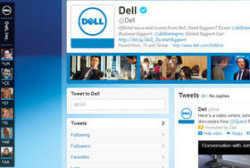 Most of you probably know that engagement is the key to social media success, but engagement is not, I repeat NOT following up a blog post, or social media post by asking your audience, “what do you think?” What do I think about what? The weather, my lunch, the colour of my shirt? Asking your audience what they think is one of the broadest questions you could possibly ask.
Most of you probably know that engagement is the key to social media success, but engagement is not, I repeat NOT following up a blog post, or social media post by asking your audience, “what do you think?” What do I think about what? The weather, my lunch, the colour of my shirt? Asking your audience what they think is one of the broadest questions you could possibly ask.
Be Specific
If you want to avoid silence, ask a specific question that directly relates to whatever it is you are posting. For example, if you posted a third party link regarding Canada’s Anti Spam Legislation, ask your audience what is one way the new CASL law will affect their marketing efforts or ask what one thing they hope CASL will do for marketers? By asking questions that directly relates to specific content, you better your chances of getting comments and creating genuine conversation.
Be Network Appropriate
Obviously, you can’t post an introductory paragraph before asking a question on Twitter, but you can on Facebook! If you are looking to engage on Twitter, try asking a question relating to a timely event, perhaps something everyone knows about. For example, if you are nearing a national holiday, such as Canada Day, ask your audience what their favourite Canada Day activity is. You could also tell them (in brief) what you’re doing to celebrate. On Facebook and Google+ you could include a link to Canada Day activities, ask what events they have attended in the past and also suggest activities no one may have thought of before – or ask your audience for suggestions.
Be Prepared to Answer
When you do ask a question on social media that generates answers, reply! A lot of people on Twitter get frustrated when someone poses a question and they answer within seconds of the post publishing and their answers are followed up with… nothing. This tells your audience that your questions are not genuine and that your posts are scheduled. A good question will get an answer, so be prepared to answer in a timely fashion with more questions or information to keep the conversation going.
The key to engaging with your audience is to demonstrate that the questions you are asking serve a purpose. Why are you asking a question? What do you want to know? By asking a direct question regarding a specific subject you are telling your audience that you genuinely care about what they have to say and want to hear from them. If your question is too open-ended, you won’t get many responses because people won’t know how to answer. The more specific your questions are, the more answers you will receive.
What is one type of question you always answer? What’s the worst question you have ever seen asked on social media?





